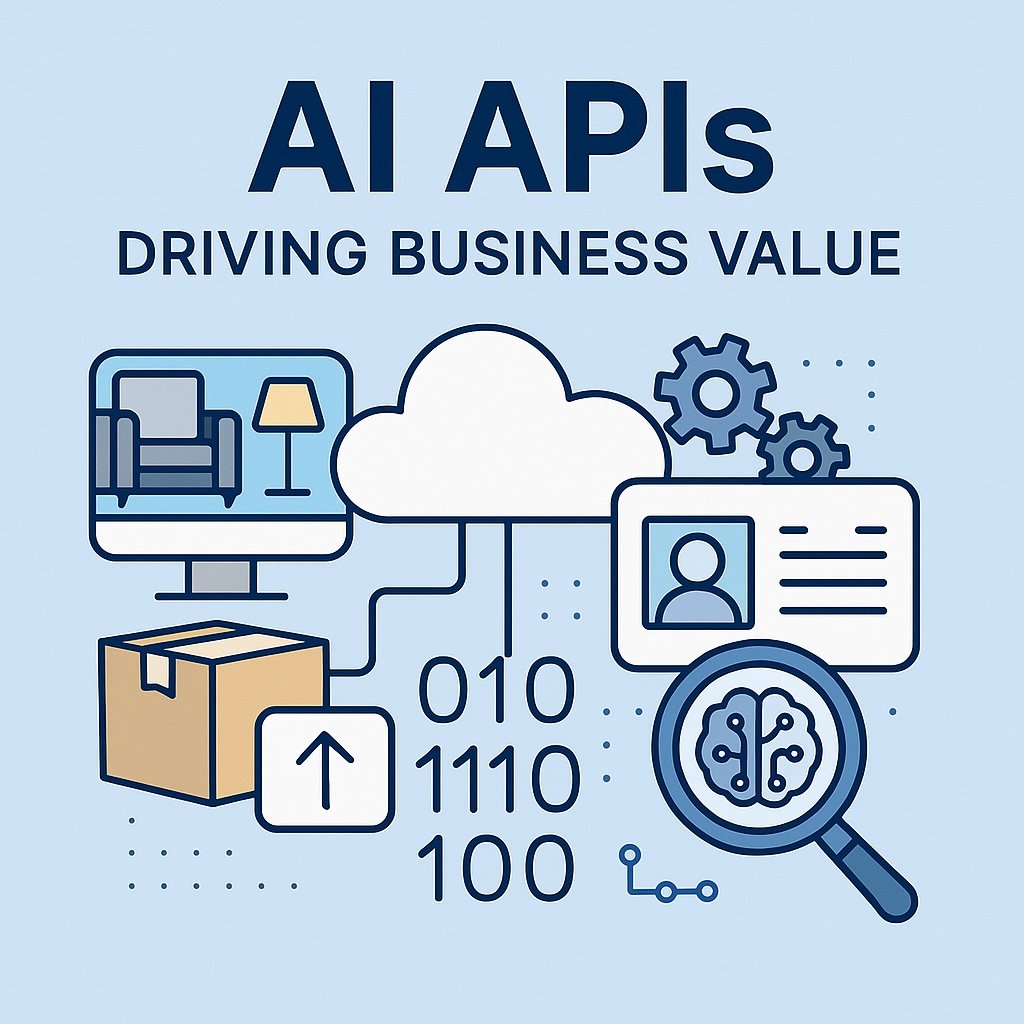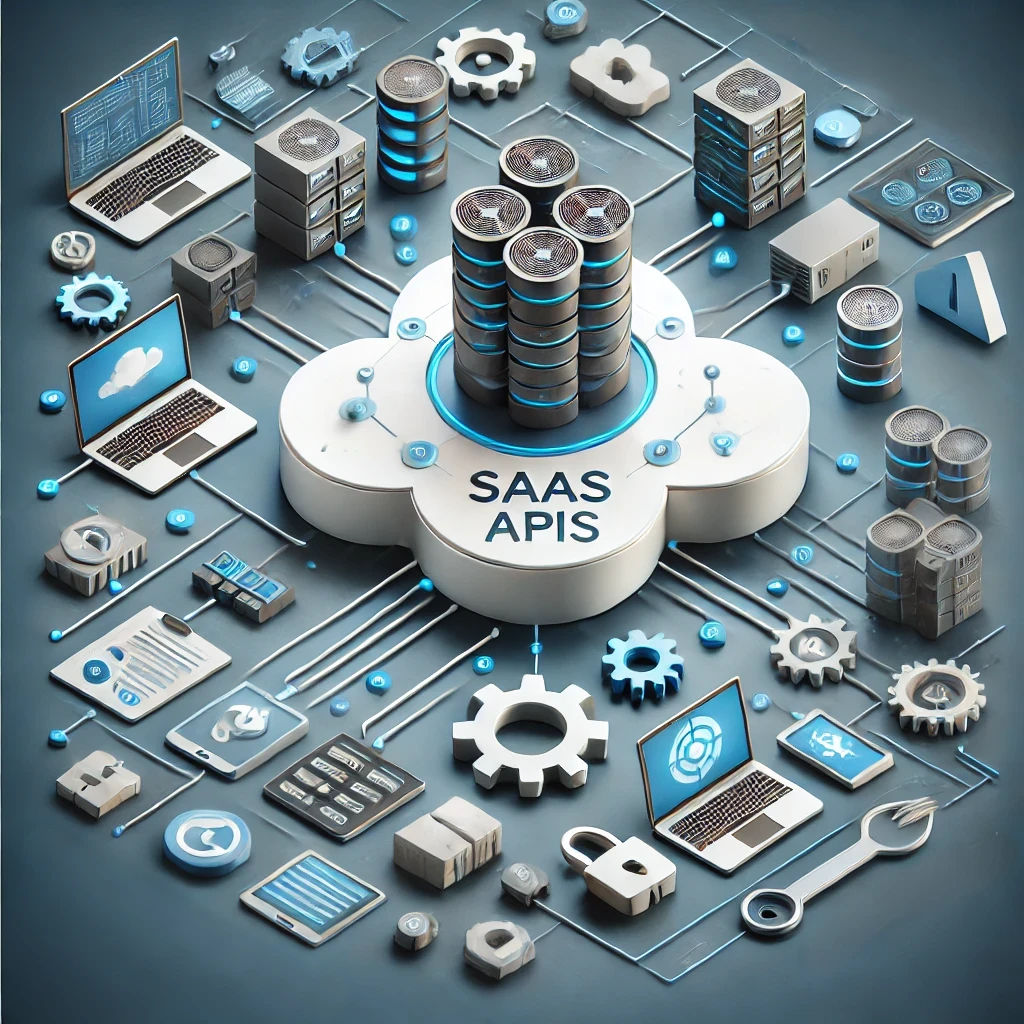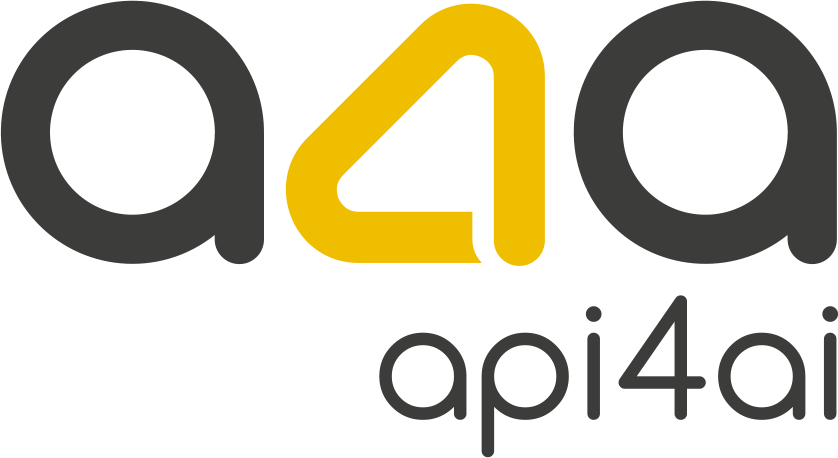
Vision Transformers 2026: State of the Art & Business Impact
Vision Transformers are redefining what’s possible in computer vision — and in 2026, they’ve moved from cutting-edge research into the heart of business operations. From automating defect detection in manufacturing to powering intelligent document processing in fintech, ViTs now deliver enterprise-grade accuracy, scalability, and adaptability. This article explores the state of the art, the architectural breakthroughs behind ViTs' rise, and how forward-thinking companies are deploying them through cloud APIs and custom solutions to gain measurable performance and strategic advantage.

AI APIs: What They Are and Why They Matter to Business
AI APIs are changing the way businesses access and apply artificial intelligence — offering powerful features like image recognition, text extraction, and object detection through simple cloud-based interfaces. In this post, we explore what AI APIs are, how they work, and why they’re becoming essential for companies looking to innovate quickly, reduce costs, and scale smarter. Whether you’re in e-commerce, fintech, manufacturing, or media, discover how ready-to-use and custom AI solutions can unlock new value for your organization in 2025 and beyond.

When Off‑The‑Shelf Fails: Custom Vision Solutions
Off-the-shelf vision APIs have made image recognition more accessible than ever, offering quick deployment and basic object detection capabilities. But when it comes to high-stakes industries like manufacturing, healthcare, agriculture and smart cities, the limitations of generic models quickly become apparent. Edge cases, domain-specific anomalies and real-time processing demands often expose gaps that standard solutions can't fill.
Custom vision models bridge this divide by delivering precision-tailored image recognition, built specifically for your business needs. Whether it's identifying microscopic defects on an assembly line, monitoring crop health from drone footage or ensuring brand protection in retail, bespoke models provide unmatched accuracy, reduced latency and full control over data privacy.
In this article, we explore the full journey — from identifying the weaknesses of off-the-shelf APIs to planning, building, and deploying a custom vision solution. Learn how the right development partner, combined with clear project scoping and smart MLOps practices, can transform your operations, reduce costs and give you a competitive edge in a data-driven world.

Artificial Intelligence (AI): A Powerful Tool or Just Marketing Hype?
Artificial intelligence is often surrounded by bold claims — some see it as a revolutionary tool, while others dismiss it as overhyped marketing. The reality lies in between. AI is already transforming industries, automating complex tasks, improving efficiency and unlocking new business opportunities. From image recognition and object detection to fraud prevention and predictive analytics, AI is proving its worth in real-world applications.
However, AI is not a magic solution. Its effectiveness depends on quality data, strategic implementation and human oversight. Businesses that adopt AI wisely — whether through ready-to-use APIs or custom AI solutions — can gain a significant competitive edge, cutting costs and improving decision-making.
The future belongs to those who adapt. Companies that integrate AI today will stay ahead in an increasingly digital world, while those who ignore it risk falling behind. AI is not just hype — it’s a game-changing tool for businesses that are ready to embrace innovation.

How to Maximize AI Benefits for Your Business Without Large Investments
Artificial intelligence is transforming businesses, but many companies hesitate to adopt it due to concerns about high costs and complexity. The good news is that AI no longer requires massive investments — cloud-based AI APIs offer an affordable, scalable way to integrate powerful AI features without upfront development costs.
In this guide, we explore how businesses can start small with pay-as-you-go AI APIs, test their impact, and scale up only if it makes financial sense. From automating image processing and document management to leveraging AI for industry-specific applications, we highlight practical use cases that provide immediate ROI.
For companies that outgrow pre-built AI solutions, transitioning to custom AI development can offer greater control, cost efficiency, and competitive advantages in the long run. We discuss when and why a custom AI solution makes sense and share expert tips for ensuring a smooth migration from cloud APIs to a tailored AI model.
Whether you’re new to AI or looking to optimize your existing AI strategy, this guide provides actionable insights on maximizing AI benefits without large investments. Start small, scale smart, and unlock the full potential of AI for your business.

Off-the-Shelf AI Cloud APIs for Enterprise Businesses: Pros & Cons
AI is transforming enterprise operations, offering automation, efficiency, and scalability like never before. Businesses today have two primary options for integrating AI into their workflows: off-the-shelf AI APIs or custom AI development. While ready-made AI APIs provide instant access to advanced AI capabilities such as OCR, object detection, background removal, and facial recognition, they also come with limitations in customization, cost scaling, and data privacy.
This blog post explores the advantages and drawbacks of off-the-shelf AI APIs, helping enterprises determine whether they should rely on pre-built AI models or invest in custom AI development. We discuss key factors such as cost efficiency, scalability, security concerns, and long-term sustainability, providing a strategic framework for businesses looking to maximize the benefits of AI while minimizing risks.
Choosing the right AI approach is crucial for driving efficiency, reducing operational costs, and staying ahead of the competition. Whether leveraging cloud-based AI APIs for quick integration or developing tailored AI solutions for specialized needs, enterprises must carefully evaluate their AI strategy to ensure long-term success.

Top 10 AI Image Processing Tools for Business Automation in 2025
AI-powered image processing is revolutionizing business automation, enabling companies to streamline workflows, enhance accuracy and reduce operational costs. From OCR for document automation to background removal for e-commerce and face recognition for security, these advanced tools are transforming industries by making complex visual tasks faster and more efficient. As we move into 2025, businesses must strategically select the right combination of off-the-shelf AI solutions and custom-built models to maximize ROI. Whether leveraging cloud-based APIs for quick deployment or investing in tailored AI solutions for industry-specific needs, adopting AI-powered image processing is key to staying competitive in an increasingly digital world.

SaaS APIs: Pros and Cons in Modern Software Development
SaaS APIs are transforming the way businesses build applications, offering powerful ready-to-use features like AI-driven image recognition, OCR and data extraction. These cloud-based solutions help companies accelerate development, reduce costs and scale efficiently. However, navigating potential challenges — such as security risks, vendor lock-in and integration complexity — is crucial for long-term success. In this article, we explore the key benefits, real-world use cases and emerging trends in SaaS APIs, along with best practices to ensure your business stays ahead in the ever-evolving tech landscape.

How Convolutional Neural Networks Transformed Industries Over the Past 10 Years
Over the last decade, Convolutional Neural Networks (CNNs) have revolutionized industries by transforming how businesses process visual data. From automating product recognition in retail to enhancing medical diagnostics in healthcare, CNNs have become the driving force behind modern image processing solutions. This blog post explores key breakthroughs in CNN technology, real-world applications across sectors and emerging trends like real-time edge processing and multimodal AI systems. As industries continue to evolve, adopting AI-powered image processing strategies is becoming essential for businesses to stay competitive, streamline operations and unlock new opportunities for growth.

Top Use Cases for Cloud-Based OCR in Industry and Business Automation
Cloud-based OCR (Optical Character Recognition) is revolutionizing business automation across industries, offering powerful solutions for digitizing documents, automating data entry, and streamlining workflows. From finance and healthcare to logistics and real estate, cloud-based OCR enhances efficiency, reduces errors, and boosts productivity. With AI and machine learning integration, OCR systems are becoming more intelligent, delivering greater accuracy and enabling deeper automation. As businesses increasingly adopt digital transformation, cloud-based OCR stands out as a key tool for staying competitive in the evolving landscape of automation.
